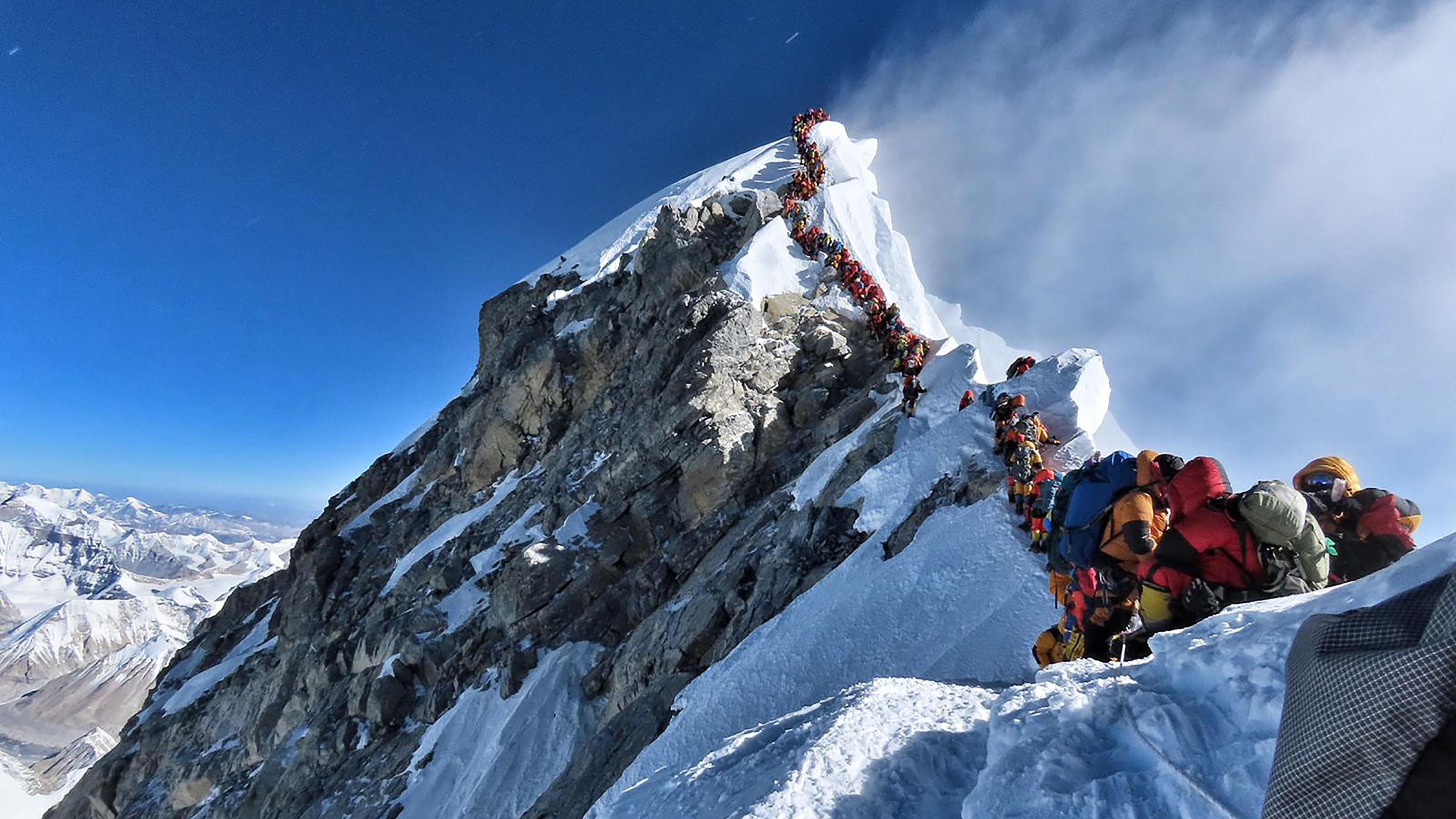By: Ryan W. Miller – usatoday.com – May 27, 2019
Big mountain climber Adrian Ballinger guides novice climbers to the tallest peaks in the world and has summited Everest eight times in eleven attempts. He says athletic ability alone won’t guarantee success. Time
A British climber who collapsed on the descent from Mount Everest’s summit became the latest in a string of fatalities on the world’s tallest peak.
Robin Haynes Fisher, 44, died Saturday when he became too weak and fainted in Everest’s “death zone,” a section at the top of the mountain known for its low levels of oxygen that can be fatal if climbers linger for too long.
Fisher’s death is at least the eighth this climbing season on Everest, according to Reuters, and the mountain has been mired with dangerous overcrowding and delays that some have blamed for the deaths.
Because of poor weather this year, climbers have had only a few days to attempt to reach Everest’s summit, CNN reported. Long lines of climbers at high altitudes have created near standstills at times.
Utah climber dies: He climbed the tallest mountain on each continent, then died as he descended Mount Everest
A stunning photo taken last week showed a packed queue of climbers waiting to reach the mountain’s top.
“Before you reach the summit, you have to wait, and every minute counts at the height,” Krishma Poudel of Peak Promotion, a mountaineering agency in Nepal, told NBC News.
The problem is that the air on Everest’s more than 29,000-foot peak has such low oxygen levels that climbers can stay there only a short time.
“Once you get above about 25,000 feet, your body just can’t metabolize the oxygen,” Grayson Schaffer, editor of Outside magazine, told NPR. “Your muscles start to break down. You start to have fluid that builds up around your lungs and your brain. Your brain starts to swell. You start to lose cognition. Your decision making starts to become slow. And you start to make bad decisions.
“And all of this is happening in the face of, you know, each person trying to sort of reach their ultimate dream.”
Schaffer said the problem has gotten worse each year with more climbers trying to make the ascent from the Nepalese side as the number of permits granted from the Chinese side has been limited.
Danduraj Ghimire, head of Nepal’s tourism department, downplayed the effect the crowds have had on the death toll. Speaking with The New York Times, he blamed the fatalities on the fewer number of good climbing days and said Nepal had no plans to limit the number of permits it grants.
“If you really want to limit the number of climbers, let’s just end all expeditions on our holy mountain,” he said.
Sherpas and climbers speaking with The Times also said a lack of experience in some climbers has exacerbated the problems. Some of the deaths this year, they said, were caused by people who could not climb up then down the peak fast enough to refill their oxygen supplies, while others should not have been on the mountain in the first place.
“You have to qualify to do the Ironman,” Alan Arnette, who writes about Everest and is a climber himself, told The Times. “But you don’t have to qualify to climb the highest mountain in the world? What’s wrong with this picture?”
But experienced climbers have also been among the dead this year.
Don Cash, 55, of Utah died last week as he descended Everest’s peak. For Cash, reaching the summit marked the completion of his dream: to climb the tallest mountain on all seven continents. He collapsed on his way down the mountain.
Though people die every year on Mount Everest, some say the problem in 2019 is particularly concerning.
“I’ve seen traffic, but not this crazy,” Nirmal Purja, who has summited Everest four times, told The Washington Post.
To see this article, click read more.
Source: Mount Everest deaths: Overcrowding blamed for string of fatalities
 Listen Online
Listen Online Watch Online
Watch Online Find a Station in Your Area
Find a Station in Your Area







 Listen Now
Listen Now Watch Online
Watch Online
